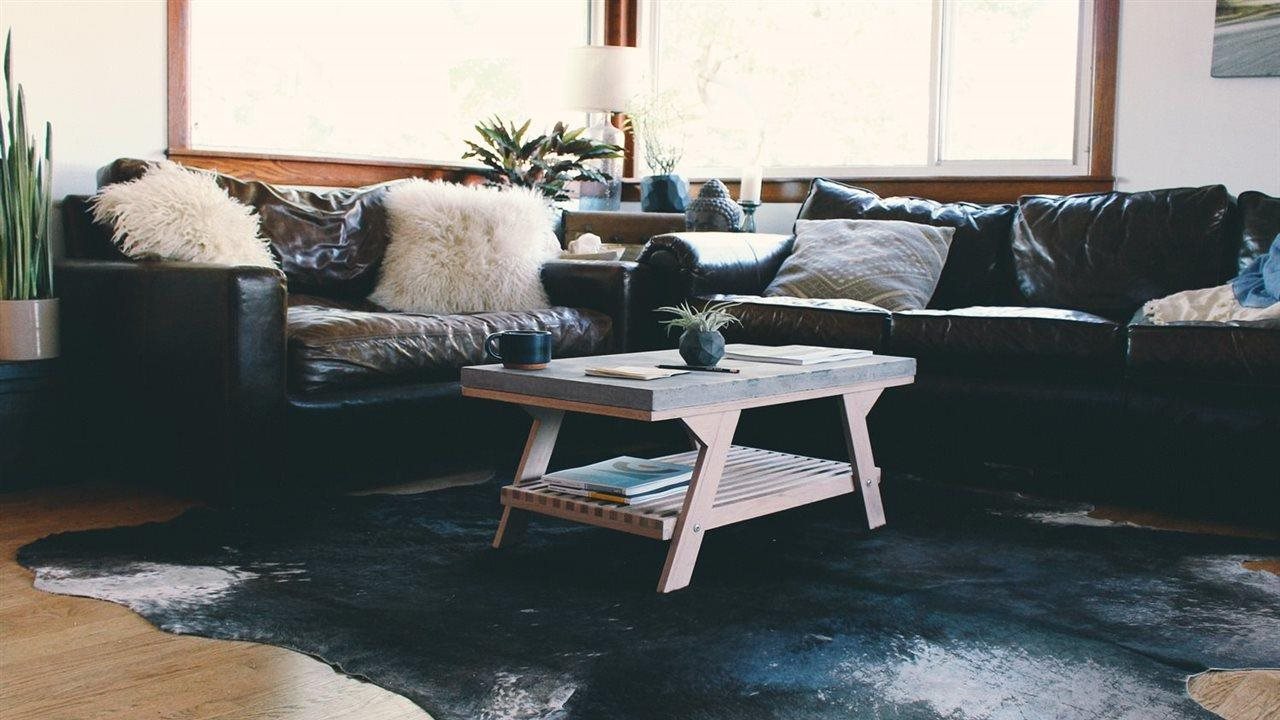
(BPT) – Concrete can make stunning, durable, and economical countertops. If you binge watch just about any home improvement reality show, you’ll notice concrete is a very popular material for kitchen countertops. However, have you ever considered using a concrete countertop to transform another part of your home? It could add eye-catching décor to your living room, outdoor entertaining area, game room or front entryway. Plus, when you make it yourself, you can create a one-of-a-kind piece of furniture at a fraction of the price.
Since concrete is such a versatile material, making your own concrete countertop can be an easy weekend project. Quikrete Concrete Countertop Mix is perfect for any DIYer with an imagination. All you need is Quikrete Concrete Countertop Mix and a base. Whether you build your own base, like this bar or repurpose something you find at your local furniture or thrift store, you can tailor your countertop anyway you like. Because concrete is endlessly customizable, Quikrete Concrete Countertop Mix can transform any common entry table, patio island or coffee table into a signature masterpiece.
Creating a countertop that matches your style
Before you begin your project, make sure you have proper safety gear, like eye protection and waterproof gloves. Then, you can get to work using these instructions:
Step 1: Determine the dimensions of your countertop. If your countertop will serve as a bar, ensure it extends at least 6 inches beyond the base to allow for stools.
Step 2: Build your countertop forms. When you’re creating the forms, make sure they’re designed and constructed in multiple sections. That way, the heavy weight of the countertop is manageable once complete. For instance, if you’re creating a concrete countertop for your entry table, build forms from a 3/4” melamine-coated particle board by screwing four 1.5” strips to a base sheet according to the countertop dimensions. Another advantage of smaller sections is if they’re less than 4’ rebar is not required.
Step 3: Apply a bead of silicone caulk in the seams of the forms. Then, smooth with a caulk tool or fingertip to give the countertop a smooth edge.
Step 4: Mix the concrete by following the directions on the bag. Then, pour into the forms in two 1” layers. If necessary, place metal rebar or wire mesh between the two layers for additional strength.
Step 5: Overfill the forms slightly before pulling a 2×4 in a sawing motion over the surface several times in each direction. This process, known as screeding, will level what will be the underside of the countertop.
Step 6: Consolidate the mix and remove air voids by tapping the forms with a rubber mallet or vibrating with an orbital sander without the pad.
Step 7: Remove the forms after 18 hours. Then, once each countertop section is removed from the forms, smooth the edges with fine sandpaper.
You must wait a few days before the countertop fully forms with many concrete mixes, but with Quikrete’s Concrete Countertop Mix, it doesn’t have to sit for more than a day.
Step 8: With the help of another person, place the newly formed countertop pieces on top of the base. If your countertop project requires any hardware or appliance installation, make sure you follow the manufacturer’s instructions.
Step 9: Seal the concrete countertops with Quikrete Acrylic Concrete Cure & Seal to protect them from dirt, oil, grease, and other stain-causing contaminates.
Pro tip: If you want to make your concrete countertop even more unique, add liquid cement colors during the mixing process and stain the surface. You can also fill any air holes with Polyblend Non-Sanded Grout from Custom Building Products.
For full project instructions, check out the how-to video at https://www.quikrete.com/productlines/countertopmix.asp.
